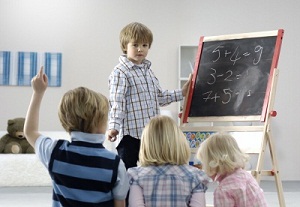Autism Behavior: Imitation
Posted by PLB · Leave a Comment

 Students with autism lack the early development of their mirror neurons. These mirror neurons allow us to “mirror” or copy what another person is doing. It is this that enables babies to imitate actions that adults around them are doing. Thus, a student exhibiting autism behavior may struggle to copy or imitate the actions that a teacher demonstrates.
Students with autism lack the early development of their mirror neurons. These mirror neurons allow us to “mirror” or copy what another person is doing. It is this that enables babies to imitate actions that adults around them are doing. Thus, a student exhibiting autism behavior may struggle to copy or imitate the actions that a teacher demonstrates.
This can also show up in classroom situations where the student may have trouble copying others.
Note that once people on the autism spectrum learn to copy, they may have trouble developing original learning patterns.
Some people with autism may learn by copying a poor or wrong pattern and then can become inflexible in changing this learned behavior pattern. For this reason, teachers must be careful what patterns are taught to a student with autism behavior and make sure to bridge a learned pattern to a new pattern.
Following are some techniques worth trying when working with students to teach imitation.
- Start teaching imitation through simple and interesting games and activities. For some students, musical instruments are a great tool to teach imitation. Once the child learns simple imitation, they can be introduced to more complex patterns.
- Rather than expecting a student to follow a task and repeat it with just a visual demonstration, supplement teaching with a set of pictures or a list of directions on how to do the task. This can make imitation easier for the students.
- While teaching a student to imitate a social gesture or expression, describe the act verbally like “bring your arm forward with your hand open.”
How can we help students with autism develop the skill to imitate?
From Professional Learning Board’s online continuing education course for teachers: Introduction to Autism



